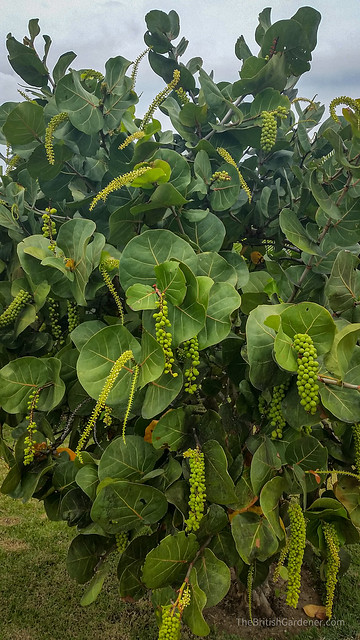Coccoloba uvifera
COMMON NAME | Seagrape or
Baygrape |
TYPE | Tree |
FAMILY | Polygonaceae |
NOTES | Reaching a height of
25 to 30 feet, Seagrape can take on a variety of shapes, depending upon its
location but typically forms a multi-stemmed vase shape if left unpruned. The
small, white flowers are on slender, terminal and lateral flower spikes. The
female flowers are followed by pendent clusters of round, grape-like, green
ripening to purple-red fruits. The leaves are green when mature, sometimes
coppery when young, often red-veined at the base, alternate, and round to
kidney-shaped. The plants branch low to the ground and have unusually thick trunks.
The bark is smooth, peeling, and grayish to mottled with patches of white,
gray, and light brown. The cut bark oozes astringent, tannin-rich, red sap
that has been used as a dye and for medicinal purposes. |
GEOGRAPHIC REGION | S. America - Ecuador, Colombia,
Venezuela, Surinam; C. America - Panama to Mexico; Caribbean |
NATIVE HABITAT | A pioneer woody plant
of sandy sea shores. Coastal strand
and limestone thickets |
WEB SOURCES |
